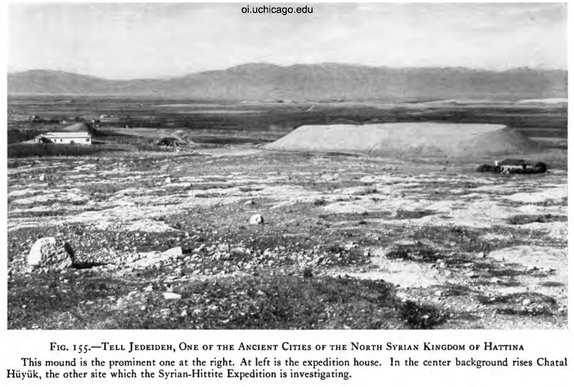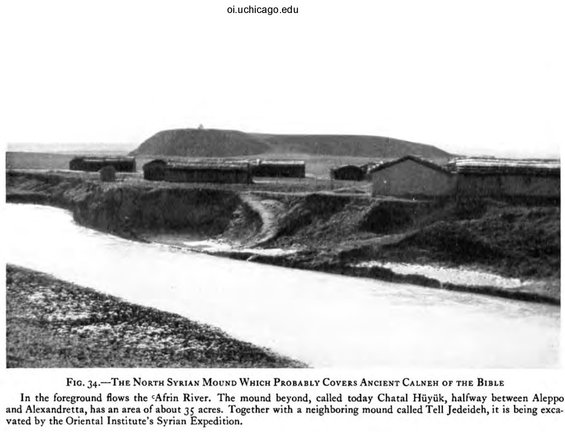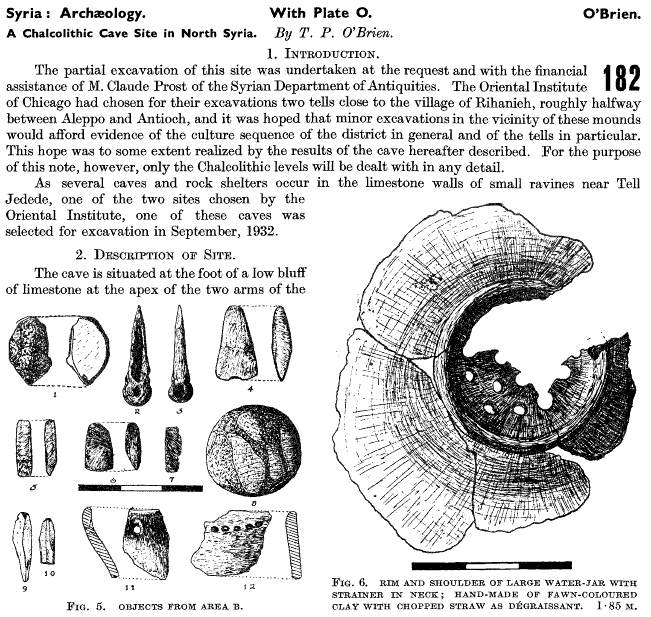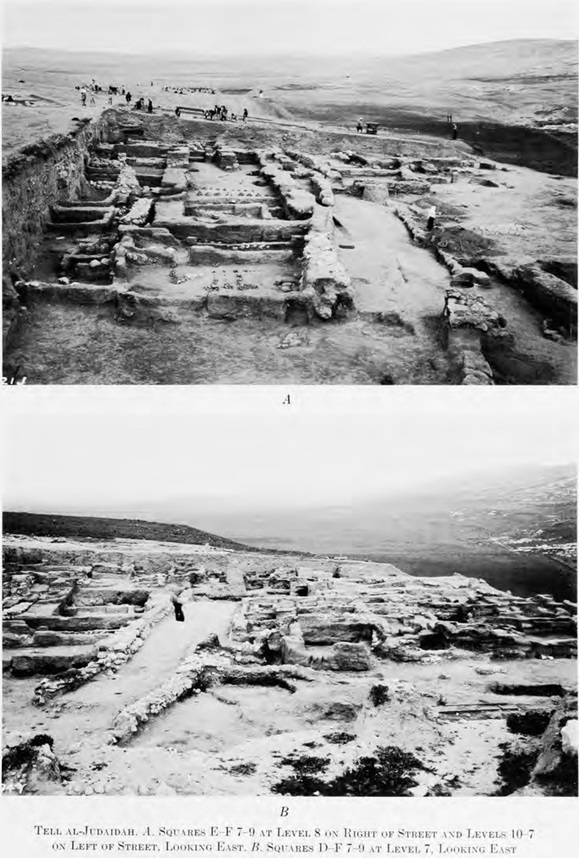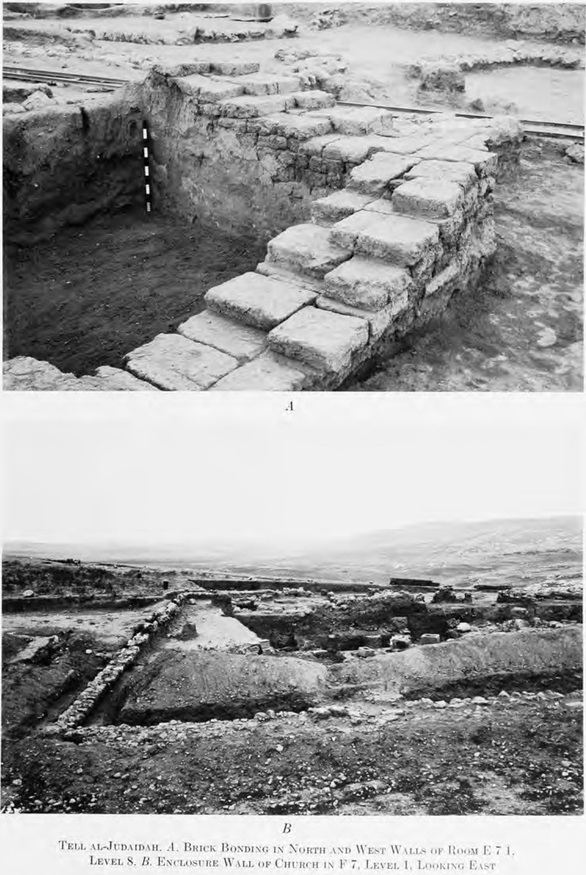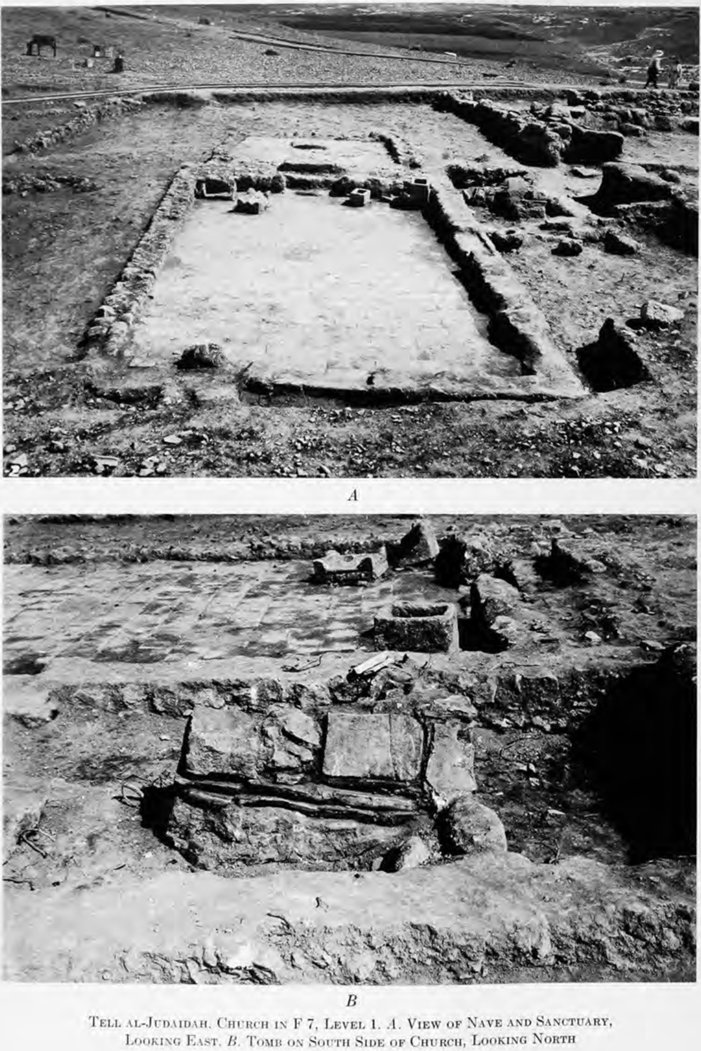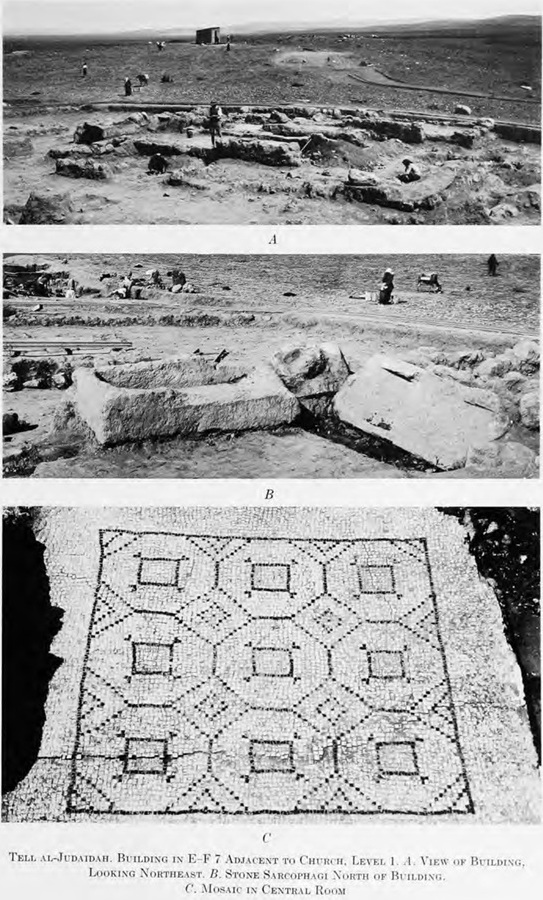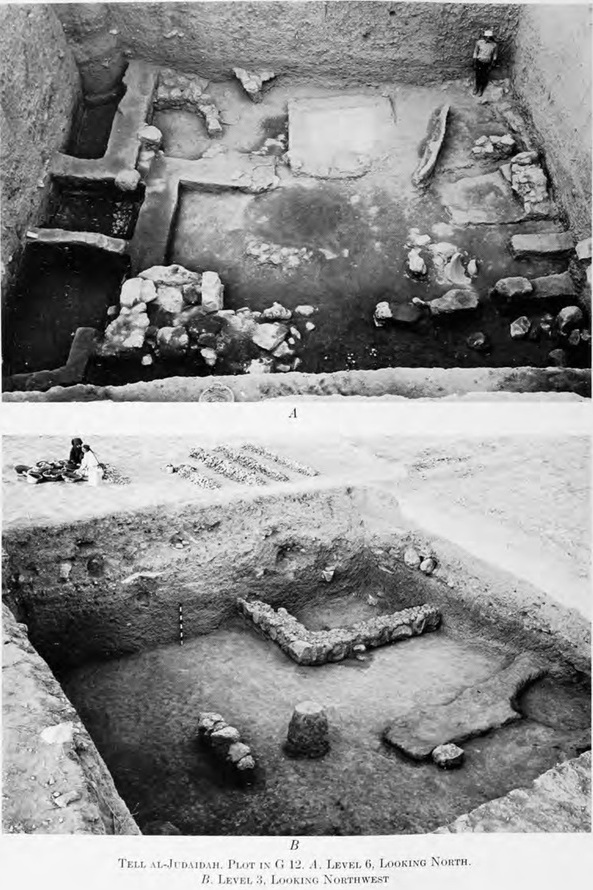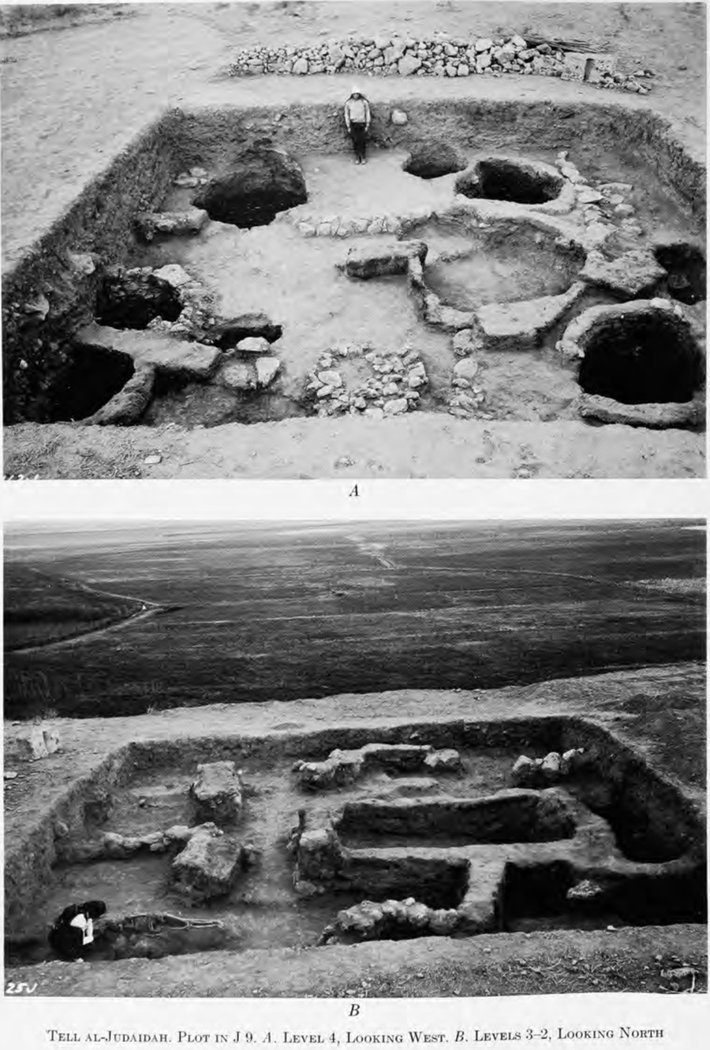|
Other Archaeological Sites / The Neolithic of the Levant (500 Page Book Online) Tell Judaidah (Neolithic to Byzantine Periods)
Tell Judaidah is one of the largest ancient sites in the Amuq Valley. Standing over 30 meters high there was settlement at the site ranging from the Neolithic (6000 BC) through the Byzantine Period. The long occupational sequence at Tell Judaidah is what originally attracted Robert Braidwood and the Oriental Institute team to the site in the 1930's. Their excavations at the site were crucial in establishing the cultural sequence of the Amuq ... Crucibles with tin rich copper encrustations (circa 4500 B.C.) and the oldest tin bronze figurines yet found in the Near East were discovered here in Amuq Phase G circa 3000 BC (Early Bronze Age I) (1) ... Tell Dhahab is located in near proximity to Tell Judaidah and is associated with it. It was excavated in 1938 in conjunction with the original Chicago expedition to Tell Judaidah ... Selected Excerpt on Tell Judaidah The Neolithic of the Levant (1978) --- A.M.T. Moore (Oxford University)
(3) Excavations in the Plain of Antioch Volume I: The Earlier Assemblages Phases A-J Survey Number 176 : 36°16'10" N, 36°35'10" E; elevation of plain at base circa 130 metres; greatest elevation 161 metres; greatest length (E-W) circa 370 metres; greatest breadth (N-S) circa 250 metres. On north bank of a pond and east bank of the stream Nahr al-Judaidah which flows from the pond circa 1.5 km southeast of Rihaniyyah. Operations in the earlier horizons of Judaidah began in September of 1935. The Oriental Institute's "Syrian-Hittite Expedition" carried on operations in the Amuq, the Plain of Antioch, from 1932 to 1938 (I). As its original name implies the expedition was expected to concern itself mainly with the archeology of the late so-called "Hittite" kingdoms which flourished in northern Syria especially in the early first millennium B.C. (II).
(I) A detailed geographical and geological description of the Amuq appears in Robert J. Braidwood,
(II) See (5) James H. Breasted, The Oriental Institute ("The University of Chicago Survey" XII 1933) Pages 87-89, 301-9 ... In Professor Breasted's mind the primary purpose of the expedition was to excavate Kunulua-Calneh, the capital
of Hattina. The Syrian Expedition of the Oriental Institute has excavated at three mounds since its establishment in the Plain of Antioch: Catal Huyuk (No. 167), Tell Ta'yinat (No. 126) and Tell al-Judaidah (No. 176). It is on Tell al-Judaidah that the most complete stratigraphic record has been obtained. Though it may be supplemented in some details by material from Catal Huyuk and Tell Ta'yinat, the main periods of occupation are represented on Tell al-Judaidah ... In the base cut made in the spring of 1936 on Tell al-Judaidah we found that the present level of ground water is about 2.50 meters higher than the earliest floor (6).
Historically scholars down through the ages have proposed various locations for the city(s) named "Calneh". It was even considered likely, in a suggestion going back to W.F. Albright (1944), that the word did not in origin refer to a city but has been corrupted from an expression meaning "all of them" [2] (WikiPedia). Scholars now tentatively identify Calneh or Kunulua with Tell Ta'yinat (See A B C). Chatal Hoyuk --- Not to be confused with the now famous Neolithic site of Çatal Höyük currently being excavated in Turkey, the site of the same name in the Amuq was excavated between 1935 and 1936 by the Oriental Institute's Amuq expedition. Occupation at the site in ancient times was primarily between the late 4th millennium BC and the middle 3rd millennium BC. Excavations at the site helped define part of the well known Amuq sequence established by Robert Braidwood and the Chicago team.
In September of 1932 the late M. Claude Prost as acting field director of the Syrian Expedition supported explorations in several caves in the limestone cliffs about 500 metres south and west of Tell al-Judaidah. The work was done by the itinerant prehistorian Terence Patrick O'Brien who also excavated in one of these caves in the Wadi al-Hammam. The site is mentioned here simply because it was excavated under the aegis of the Syrian Expedition. It may be noted in passing that the range of material below O'Brien's layer 4 appears to be of Amuq Phase A types.
(2) Excavations in the Plain of Antioch --- Volume II: The Structural Remains of the Later Phases: Chatal Hüyük -- Tell Al-Judaidah and Tell Ta'yinat by R. C. Haines in the Oriental Institute Publications 95 (1970) The Syrian-Hittite Expedition of the Oriental Institute was primarily occupied with the excavation of three large mounds in the Plain of Antioch: Chatal Huyuk, Tell al-Judaidah and Tell Ta'yinat. In addition an archeological survey was made of the plain and soundings were made in several of the smaller mounds. The report of the earlier assemblages (Phases A-J) has already been published. The present report deals with the structural remains of the later assemblages, Phases (K-S). Excavations were started in the spring of 1934 and continued through the spring of 1936. The earlier phases (A-J) were investigated in the lower part of TT 20 -- squares J-K 3 -- and the adjoining trenches TT 1-11. The later phases were excavated in a north-south trench across the west part of the mound, two intersecting trenches at the east end of the mound, in three isolated plots and in TT 20 as well. See Chapter II TELL AL-JUDAIDAH (Pages 26-36) for archaeological report ... (8) The Amuq Valley Regional Project: 19951998 by Yener et al in AJA 104 (2000) TELL AL-JUDAIDAH SOUNDING 1995 --- Christopher Edens During the 1995 season AVRP team members visited Tell al-Judaidah where recent bulldozer cuts along the northern and northeastern skirts of the mound had exposed intact stratigraphy and substantial mud-brick architecture in one cut. The pottery in the bulldozer spoils suggested that the architecture dates to the Amuq FG range (Late ChalcolithicEarly Bronze I); periods of current regional interest for research into emerging complex societies (See Pages 195-98)
(1) Excavations at Tell Judaidah --- © 2018 The Oriental Institute of
The University of Chicago
(2) Excavations in the Plain of Antioch --- Volume II: The Structural Remains of the Later Phases: Chatal Hüyük -- Tell Al-Judaidah and Tell Ta'yinat by R. C. Haines in the Oriental Institute Publications 95 (1970)
(3) Excavations in the Plain of Antioch Volume I: The Earlier Assemblages Phases A-J By Robert J. Braidwood and Linda S. Braidwood in the Oriental Institute Publications 61 (1960)
(4) A Chalcolithic Cave Site in North Syria by T. P. O'Brien in Man Volume 33 (Nov 1933), Pages 173-178
(5) THE UNIVERSITY OF CHICAGO SURVEY VOLUME XII: THE ORIENTAL INSTITUTE --- JAMES HENRY BREASTED Director (1933)
(6) Mounds in the Plain of Antioch: An Archeological Survey By Robert J. Braidwood in the Oriental Institute Publications 48 (1937)
(7) The Syrian Expedition of the Oriental Institute of the University of Chicago by C. W. McEwan in the AJA (1937)
(8) The Amuq Valley Regional Project: 19951998 by Yener et al in AJA 104 (2000)
Tell Judaidah --- WikiPedia
|
